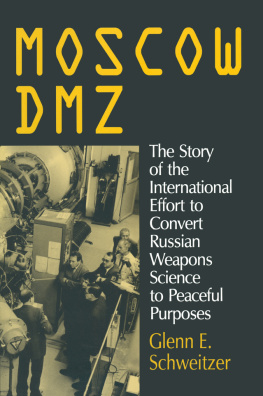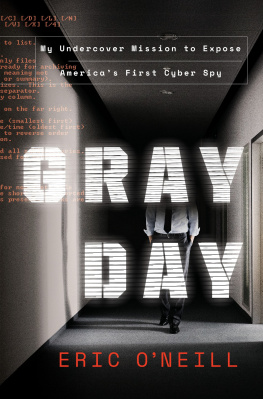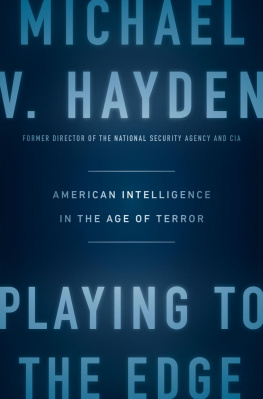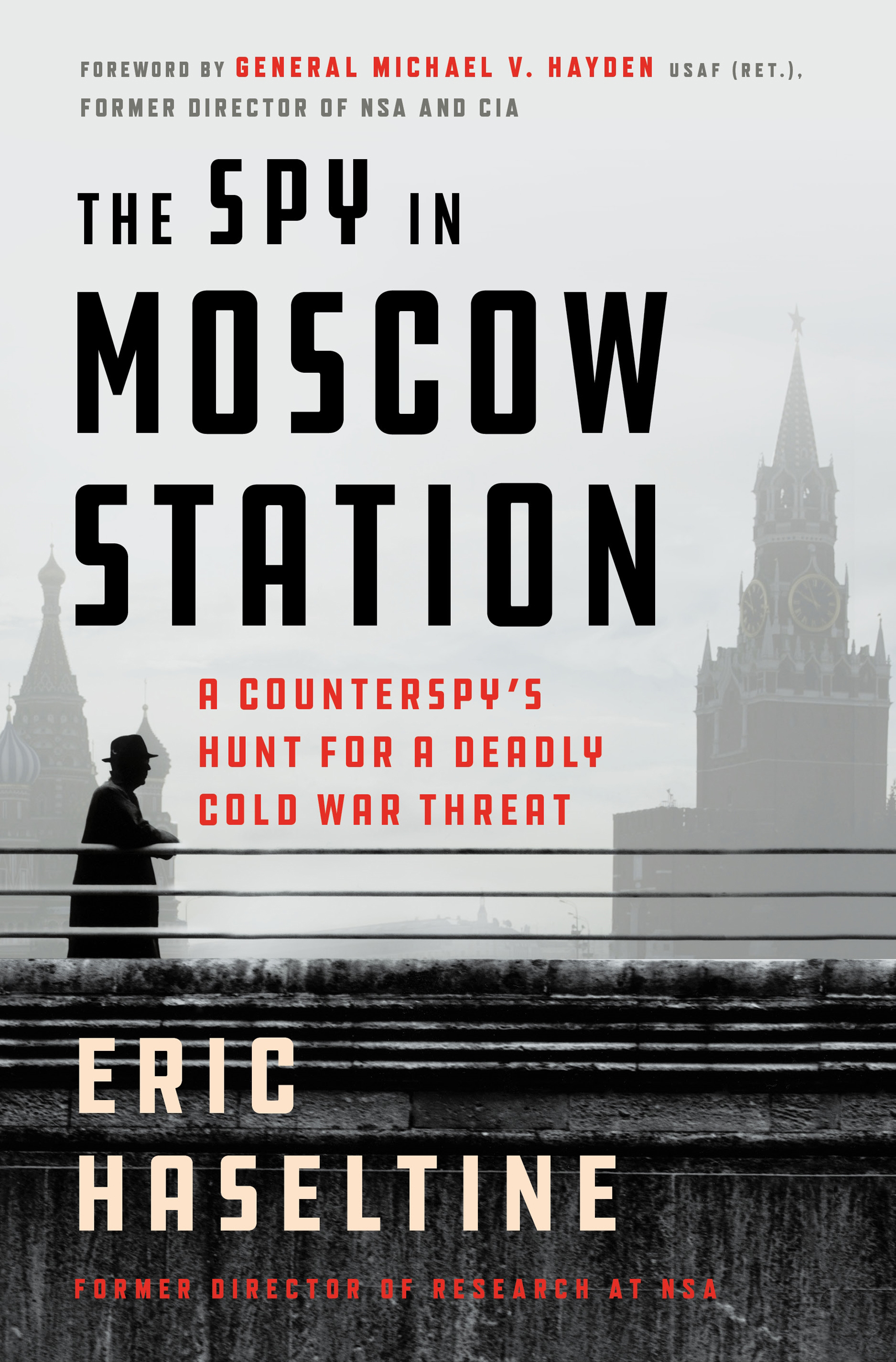The author and publisher have provided this ebook to you for your personal use only. You may not make this ebook publicly available in any way. Copyright infringement is against the law. If you believe the copy of this ebook you are reading infringes on the authors copyright, please notify the publisher at: us.macmillanusa.com/piracy.
When I assumed command of NSA in March 1999, I quickly realized that, although the intelligence agency was a national treasure, it needed to be shaken up to meet the daunting challenges of the new millennium.
9/11 made the need to reenergize NSA even more acute, so I reached outside of the government for top industry talent to help me accelerate the agencys transformation.
Eric Haseltine, who came from Walt Disney Imagineering, of all places, was perhaps my riskiest and most audacious hire. I brought Eric into the agency to lead and to shake up NSAs Research Directorate, whose mission, in turn, was to shake up and modernize the entire enterprise.
Although parachuting a Disney executive with no intelligence experience into a leadership post at NSA raised a lot of eyebrows and generated hallway snickers about General Haydens Mickey Mouse hire, Eric immediately metand surpassedmy expectations for helping to transform the agency.
Perhaps his most important accomplishment was to quickly shift NSAs research focus from cool science projects to technologies that made an immediate, substantial, and practical improvement to NSAs core signals intelligence and information assurance missions.
The transformation of NSA research that Eric began in mid-2002 proved very timely when the Iraq war erupted early the following year. Rather than sit at his desk in our Fort Meade headquarters, Eric traveled to Iraq and Afghanistan multiple times to get a firsthand look at the needs of NSA officers directly supporting combat operations in the two theaters of war. These trips were the first time in NSAs history a director of research had traveled to the pointy end of the spear in order to establish research priorities.
Each time Eric returned from one of these trips, I valued his candid take on the effectiveness of NSAs combat support activities. I especially appreciated it when Eric spoke truth to power, as when, in early 2004, he informed me that a good number of NSAs military customers were less than thrilled with the timeliness and effectiveness of NSA support. Based on Erics input, I ordered immediate changes to the way NSA supported war fighters, shipping several hundred cryptologic support elements to the battlefield and integrating them with war fighters to improve NSAs responsiveness.
Getting into the spirit of combat support, Eric also directly engaged NSA research in important challenges, such as reducing casualties from roadside IEDs. For his contributions in this vital area, Eric was awarded the National Intelligence Distinguished Service Medal.
In 2005, when President George W. Bush appointed me the first principal deputy director of national intelligence, I brought Eric with me as associate director of national intelligence to lead science and technology for the entire U.S. intelligence community (IC). My hope was that Eric would do for the entire U.S. intelligence enterprisecomprised of no fewer than sixteen different intelligence agencieswhat he had done at NSA: shake things up.
And shake things up he did. Eric moved swiftly to weave the disparate threads of science and technology efforts across the IC into a coherent whole, even when the threads strenuously resisted being woven. Both I, and the ICs overall bossJohn Negroponte, director of national intelligencefielded multiple calls from agencies across the community complaining of Erics aggressive moves to unify and rationalize science and technology pursuits across Americas far-flung intelligence enterprise.
Perhaps Erics most controversial, and important, move was to work with his deputy and successor, Steve Nixon, to create the ICs own version of DARPA, IARPA (Intelligence Advanced Research Projects Activity). IARPA filled a glaring and dangerous hole in the ICs science and technology portfolio: high-risk, high-reward endeavors that brought about revolutionary, as opposed to evolutionary, advances in mission capability.
Creating IARPA was a gutsy move, because in order to fund it, Eric and Steve had to take large sums of money away from individual agencies, most notably the CIA (where I was then director!).
We naturally butted heads a few times, but we never stopped engaging constructively or respecting each other, and when Eric left the government in 2007, we were still good friends and now enjoy serving on a corporate board together.
Reading through a draft of this book, I realize that Eric has not stopped shaking things up. His candid but accurate description of the way our intelligence agencies sometimes underestimate the Russiansbadlywill not sit well in many quarters, nor will his descriptions of interagency turf fights that give the Russians an added edge against us.
The actors have changed in the forty years since the events described here, but many of the key issues and challenges have not. The Russians continue to surprise us with their audacious, innovative tradecraft, and we sometimes disappoint, even responding to Russian moves with denials and finger-pointing rather than purposeful action. Russian efforts to change the outcome of our 2016 presidential election come to mind.
So although this book describes a devastating Russian attack on our national security at the height of the Cold War, its lesson is extremely timely and important for today, and that lesson is this: we can never afford to underestimate the inventiveness and determination of highly motivated adversaries, nor can we underestimate the damage we do to ourselves when we fight each other responding to such adversaries.
To modify a phrase coined by The New Yorkers Lawrence Wright, Russia cannot destroy America. Only we can do that.
General Michael V. Hayden USAF (retired), former director of NSA and former director of CIA, and author of The Assault on Intelligence and the New York Times bestseller Playing to the Edge
NSA Headquarters, Fort Meade, Maryland, February 2003
The gleaming glass-fronted structure that serves as NSAs main headquarters building doesnt look much like a government facility on the outside. With its clean lines and tinted sides that reflect the eastern Maryland sky, OPS2, as the building is called (OPS standing for operations), would be more at home in the financial district of any large American city than on the campus of a large army base.
The inside of OPS2 is another matter. Where a commercial building would have carpeted floors, potted plants, and stylish prints adorning the walls, the raised floors of NSA headquarters are simple computer-floor tiles, which allow power and data cables to pass unmolested underneath. The walls are almost entirely devoid of decoration, save an occasional security reminder every few hundred feet or so. The overhead fluorescent lighting is bright and harsh.
In a commercial building, coworkers would be gathered in hallways, drinking coffee and engaging in informal shoptalk or gossip, but in OPS2, as in other NSA buildings, employees seldom congregate for hallway chitchat.














